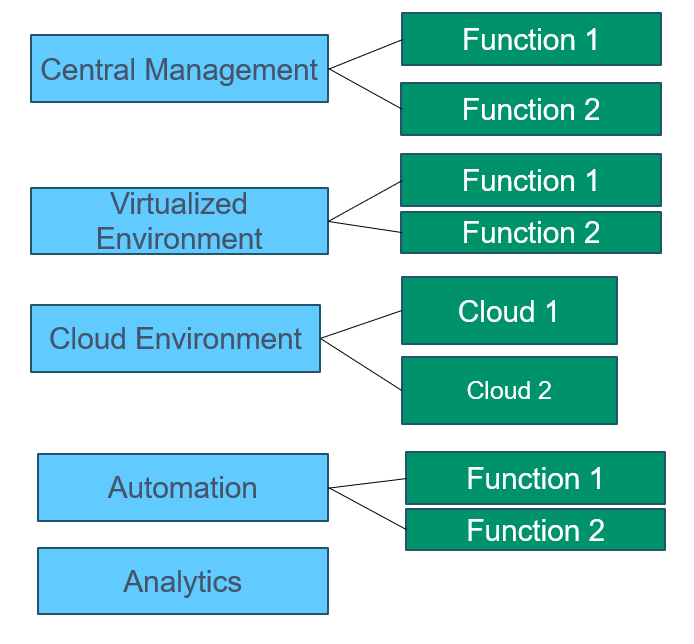Creating a Product Hierarchy
Collaborating on a product hierarchy enables product managers and marketing teams to work smarter together
Introduction: The Growing Role of Product Marketing
When is the right time for product managers to think about product marketing?
Waiting for the first feature demo is too late to engage with marketing! The new reality is product success depends on working with marketing before building features and products.
A recent McKinsey & Company article shows the growing importance of product marketing managers contributing early in the product ideation phase. The graphic below shows the new set of responsibilities for product marketing:

Why Marketing Matters More Than Ever in Product
Timing is Everything
Products need to penetrate the market quickly to justify ongoing investment. This takes groundwork well before announcing anything.
With more data and AI tools, product teams can track leading indicators to decide if the launch is successful. The data provides feedback in months for a B2B product. Pre-launch marketing is key in the first few months of product adoption.
Some ways go-to-market creates early momentum:
signing up early customers
pre-launch content to build demand
Customer education - before and after launch
Product managers partnering with marketing early get huge returns by priming the market for their products.
Complex Buying Process
Buying decisions depend on agreement from many stakeholders. As the number of stakeholders increases before purchasing your product, you have a broader range of influencers to contact.
Some of the key decision-makers to consider:
End users
IT
Legal
Procurement
Engineering and technical teams
Business unit leaders
Customer opportunities need longer nurturing to handle concerns from a diverse team approving a purchase of your product.
Product managers who understand the different buyers of their products drive better product strategies.
Custom Messaging is Needed
Customers are looking for tailored messaging that answers their questions about your product. Business decision-makers need to understand the return on their investment. Technical decision-makers seek information about how your product operates and how to maintain your product.
At a minimum, your product information must address business needs and technical questions. Adding in the other key stakeholders brings more pre-sale product needs. Such as:
Accessibility for all end-users
Data privacy protections
Ethical labor standards
How to maintain a secure environment
Your payment terms
Your ability to handle a variety of potential customer decision-makers with custom material is key to launch success.
When Product Managers Collaborate with Marketing
With the changes in marketing products, should product managers collaborate more with marketing?
The answer isn't just more collaboration - it is better collaboration. Product managers need a different process to streamline the teamwork with marketing.
Defining your product hierarchy is a major step that aligns your product with marketing.
What is a Product Hierarchy?
Instead of focusing on your product in isolation, think of the broader portfolio in which your product lives.
Product teams often create a product hierarchy to align their organization to the customers' product context. The product hierarchy is a structured way a product and its offerings are organized from broad categories to specific features. It's important for product managers and marketing to have a shared understanding of the product hierarchy.
The product hierarchy is used across the organization for:
Product strategy in each market segment
Naming conventions for SKUs and products
Marketing collateral and web pages
Market segment alignment
Prioritization of messaging and investment
You can imagine how simple it is to communicate at multiple levels with customers with an agreed product hierarchy.
At the top level, product managers and marketing define broad categories that match the industry segments in which the products operate. This forms the competitive landscape of the products in each top-level hierarchy.
Depending on the extent of your organization's reach, the hierarchy can go several layers down to product lines and individual products. At the lowest level, each product has common elements. For example:
Product Description
Business tracking
Market positioning
Product strategy
Product team allocation
In smaller, single-product organizations, the hierarchy typically aligns with positioning in the market with 2 or 3 levels. Below is an example:
Real-world product hierarchy examples and the slide templates in this article are here (for Paid Subscribers).
Why Use a Product Hierarchy to Collaborate with Marketing?
Defining the product hierarchy is the beginning of ongoing product and marketing collaboration. No longer do product teams wait to engage marketing after the product development is complete!
Independent work on priming the market and preparing for launch while the product development is underway scales the efforts of the product team. The product hierarchy is a map for product managers and marketing to align and win business in a fast-paced market.
Some of the benefits of a product hierarchy are:
Strategic Positioning: Clear differentiation of each product in its top-level market category focuses on the positioning of the products relative to competing products. Likewise, the messaging of your product's features is developed to support this positioning.
Portfolio Management: With your shared understanding of each product in the portfolio, your go-to-market strategy is tailored to the product category. This ensures that you position the right products at the right time.
Market Priming and Launch Execution: The product hierarchy drives the timing, messaging, and channels to market for each product and feature. With a shared understanding, marketing can prime the market and customize campaigns that grow the business.
Conclusion - Building Success from the Ground Up with the Product Hierarchy
When product managers and marketing collaborate to define and maintain their product hierarchy, they lay the groundwork for product adoption and market leadership. The real power of the product hierarchy is in how it aligns teams before a product hits the market. Getting product and marketing focused on shared goals early is key.
In today's fast-paced environment, structuring the product hierarchy from product categories to products and features empowers each team to execute independently. A shared understanding of the market and customer needs across the product lifecycle lets you stay ahead.
Working together, you're not just building products - you're building the future of your market.
Related material
McKinsey & Company article - the article that inspired this newsletter on the growing importance of software product marketing managers
Your Product's Environment - guide to understand your product's environment
Partnering with Marketing - Myth busting on partnering with product marketing
TLDR Product listed Product Management IRL articles recently! This biweekly email provides a consolidated email of recent product management articles.
Last week’s backstory for paid subscribers was handling product managers who want consensus at all costs. Breaking Free from the Happy Path
Connect to Amy on LinkedIn, Threads, Instagram and X/Twitter







Great post! Thanks for the mention of LiveSession 🙏